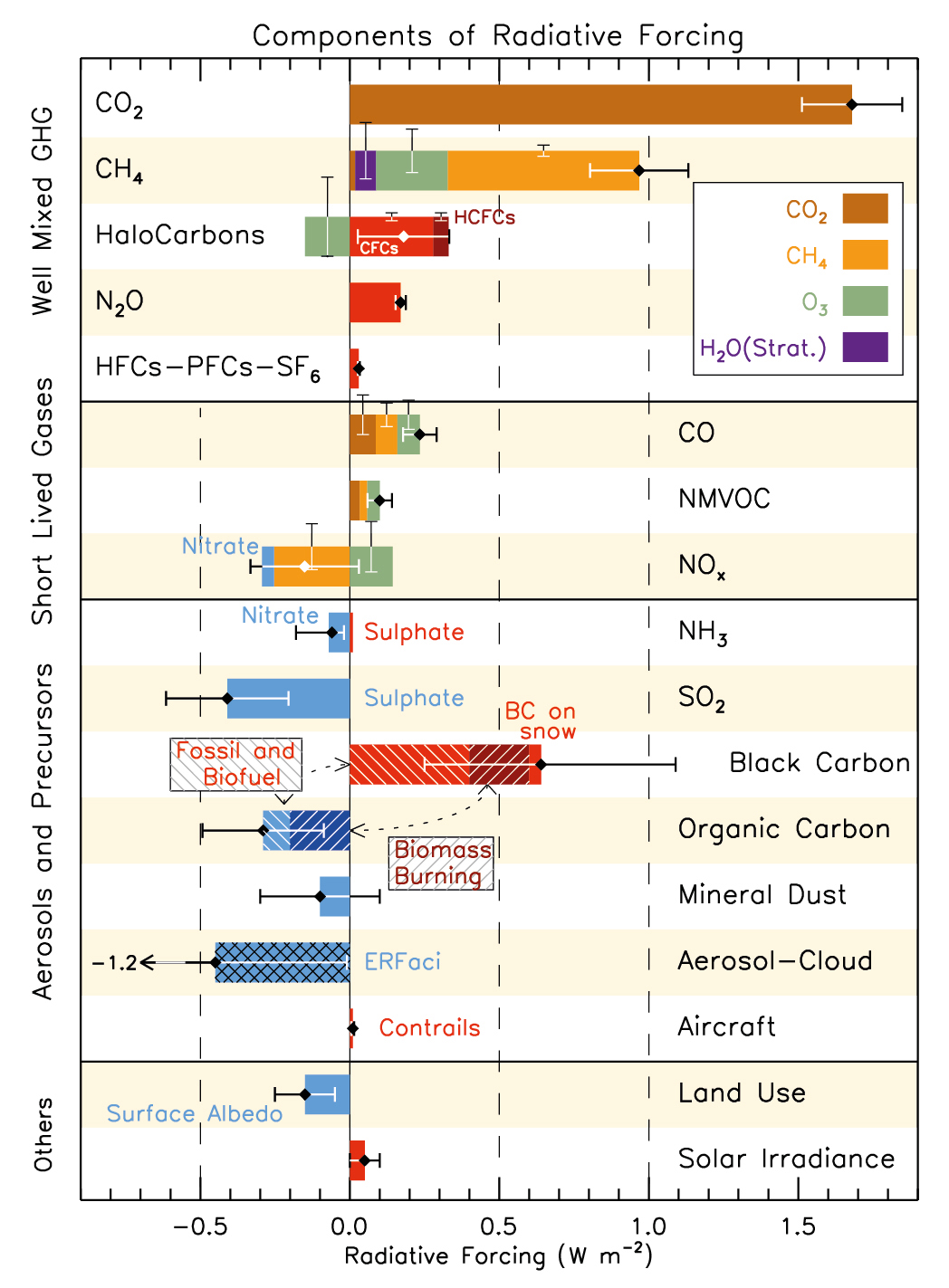Radiative Forcing
My approach to the research topic of radiative forcing is mostly focused in
its estimation for greenhouse gases (GHG) either considered as well-mixed,
like CO2 or CH4, or inhomogeneous like Ozone. For GHG our calculations has been
done with the software SOCRATES-RF which, based on the radiative scheme SOCRATES
developed at Met-Office, is able to calculate the radiative forcing with the
fixed dynamical heating method (therefore offline calculations).
This methodology is reliable for GHGs but it doesn't account for several processes
like tropospheric feedbacks (the article Sherwood et al (2015) explains these concepts).
Actually, because these kind of feedbacks are important in the case of aerosols, the offline
methodology applied to these kind of species is able to estimate only the direct radiative
forcing but it would not provide an accurate estimation of the climate
impacts of aerosols. Therefore, to calculate these feedbacks it is needed the
use of effective radiative forcing in any of its variants. In the case
of aerosols we have participated in estimations of radiative forcing in AerChemMIP,
but also direct radiative effects of mineral dust has been analysed with
detail in CRESCENDO (see Checa-Garcia et al. (2021)).
In general, the definition of radiative forcing of IPCC reports relies in a comparison between present-day and pre-industrial. In the case of radiative effects in aerosols, often it refers to the role of the presence of an aerosol regarding its interaction with radiation but without referring necessarily to pre-industrial times (the article Heald et al (2014) describes these differences).
The topic of radiative forcing has been part of the projects briefly described below (SMURPHS and AerChemMIP).
In general, the definition of radiative forcing of IPCC reports relies in a comparison between present-day and pre-industrial. In the case of radiative effects in aerosols, often it refers to the role of the presence of an aerosol regarding its interaction with radiation but without referring necessarily to pre-industrial times (the article Heald et al (2014) describes these differences).
The topic of radiative forcing has been part of the projects briefly described below (SMURPHS and AerChemMIP).
 (Creative Commons from Wikipedia)
(Creative Commons from Wikipedia)
Projects related:
- SMURPHS: project coordinated in the University of Leeds (UK) designed to better understand the causes of periods where the rate of global-mean surface temperature is increased or decreased at decadal time-scales compared with long term (multi-decadal) trends. Publications: Checa-Garcia et al. (2018) Checa-Garcia et al. (2016)
- AerChemMIP: rather than an specific project it is a inter-model comparison in the umbrella of CMIP6 (an specific MIP) designed to quantify the climate and air quality impacts of aerosols and chemically-reactive gases in the climate models that are used to simulate past and future climate. Publications: Thornhill et al. (2021) Thornhill et al. (2021)